Info
Subfamily: Panicoideae
Genus etymology: Paspalum = "millet" [Greek] some species are used as cereals
Species etymology: vaginatum = "sheathed" [Latin] refering to the nodes being covered by sheaths
Photosynthetic type: C4 (warm season)
Nativity: naturalized - accidental
First recorded in Hawaiʻi: 1936
Map
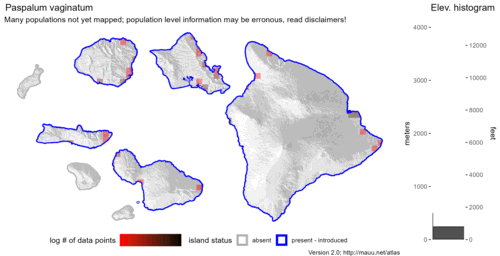

Inflorescence
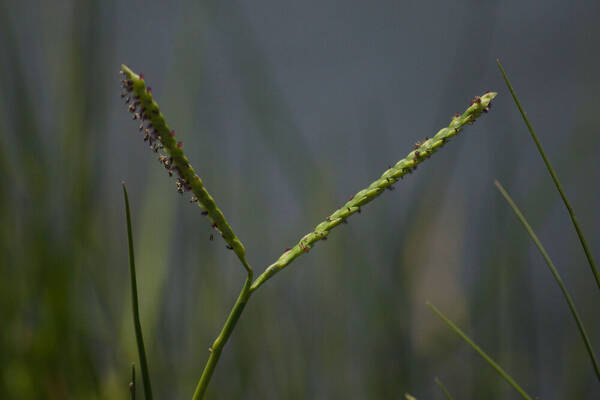
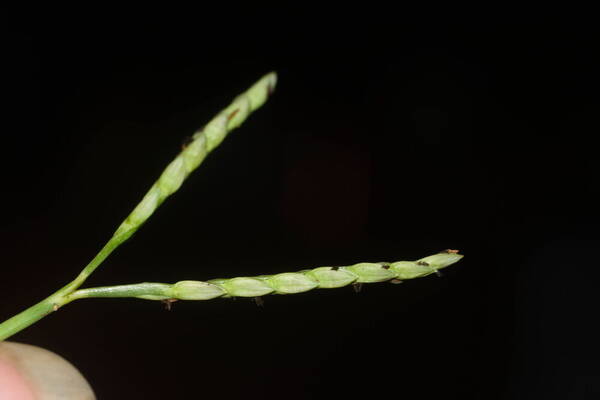
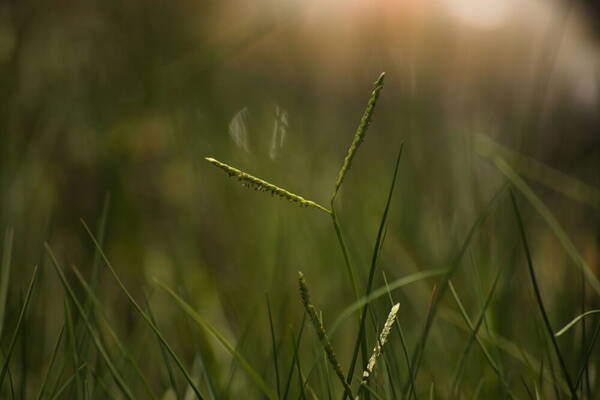
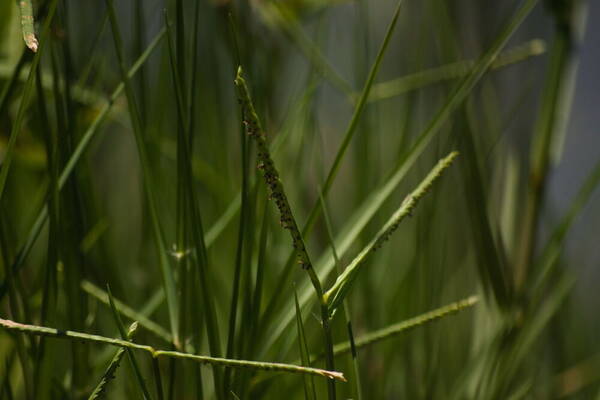
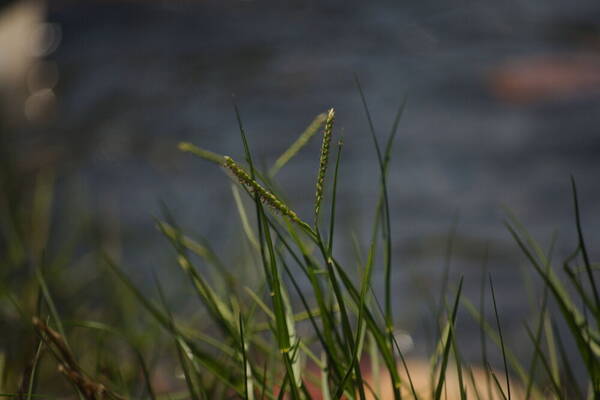
Plant
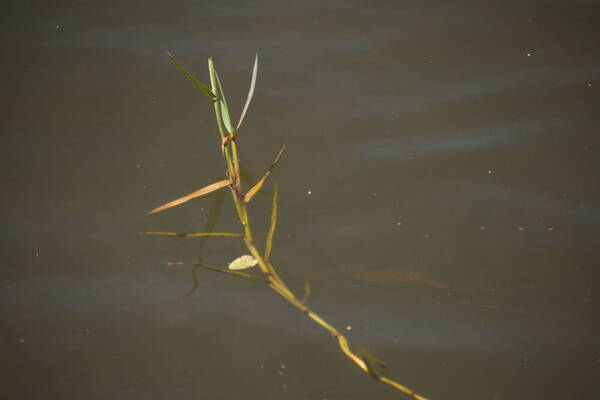
Habit
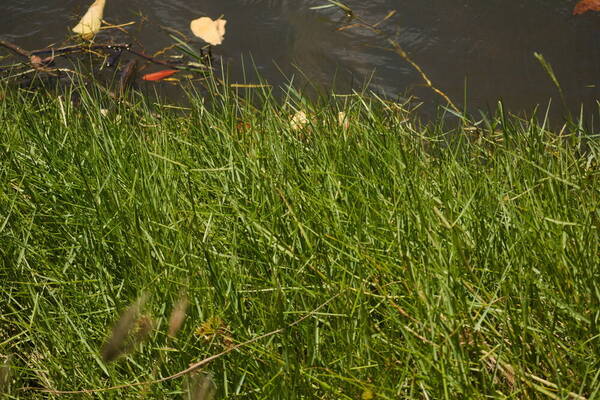
Spikelets
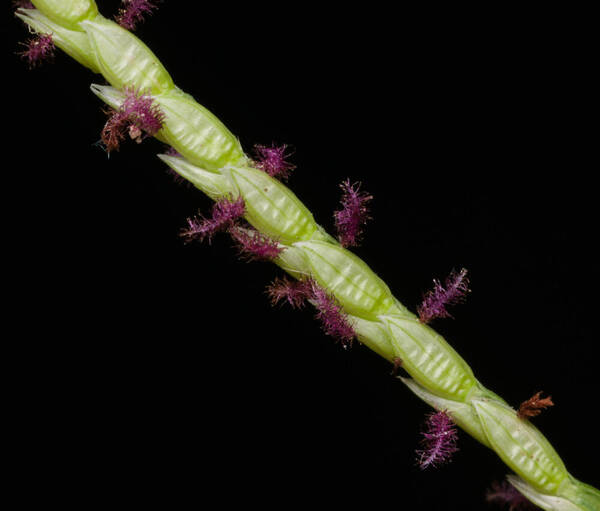
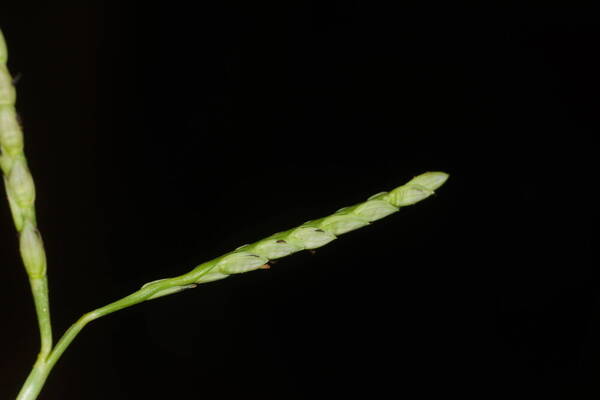
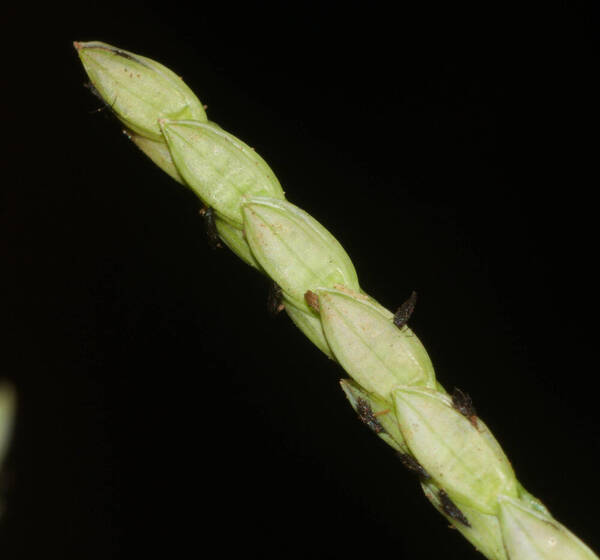
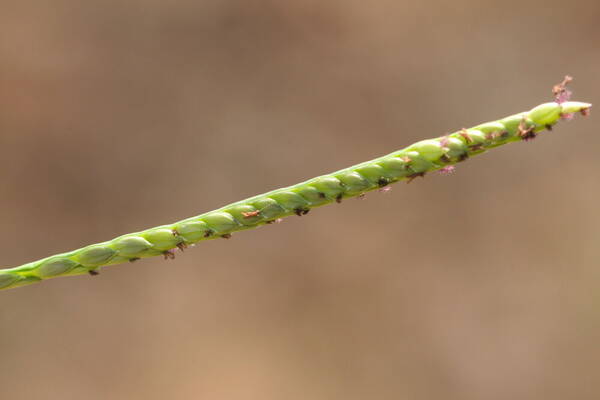
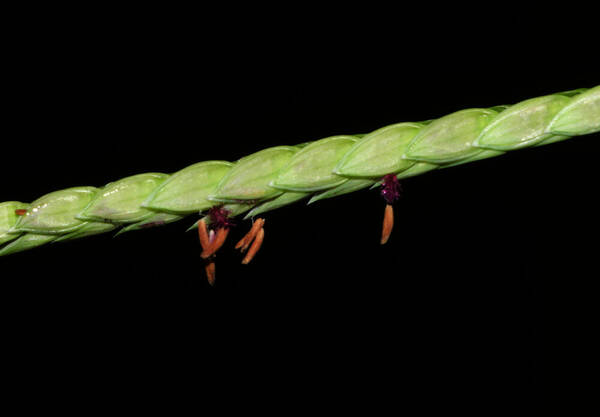
Description
Plants perennial; rhizomatous and/or stoloniferous. Culms 10-79 cm, erect; nodes glabrous. Sheaths glabrous, sparsely long pubescent distally; ligules 1-2 mm; blades 10-19 cm long, 1.4-8 mm wide, flat or conduplicate, glabrous or pubescent, apices involute. Panicles terminal, usually composed of a digitate pair of branches, a third branch sometimes present below; branches 1.1-7.9 cm, diverging to erect; branch axes 0.4-1.4 mm wide, winged, glabrous, margins scabrous, terminating in a spikelet. Spikelets 3-4.5 mm long, 1.1-2 mm wide, solitary, appressed to the branch axes, elliptic-lanceolate, glabrous, light stramineous, apices acute to acuminate. Lower glumes absent (rarely present); upper glumes and lower lemmas glabrous, 3-veined; upper florets white. Caryopses 2.8-3.1 mm, yellow. 2n = 20, 40, 60.
(Description source: Barkworth, M.E., Capels, K.M., Long, S. & Piep, M.B. (eds.) 2003. Flora of North America, north of Mexico. Volume 25. Magnoliophyta: Commelinidae (in part): Poaceae, Part 2. Oxford University Press, New York. 783 pp http://floranorthamerica.org/Paspalum_vaginatum )
Plants perennial; rhizomatous and/or stoloniferous. Culms 10-79 cm, erect; nodes glabrous. Sheaths glabrous, sparsely long pubescent distally; ligules 1-2 mm; blades 10-19 cm long, 1.4-8 mm wide, flat or conduplicate, glabrous or pubescent, apices involute. Panicles terminal, usually composed of a digitate pair of branches, a third branch sometimes present below; branches 1.1-7.9 cm, diverging to erect; branch axes 0.4-1.4 mm wide, winged, glabrous, margins scabrous, terminating in a spikelet. Spikelets 3-4.5 mm long, 1.1-2 mm wide, solitary, appressed to the branch axes, elliptic-lanceolate, glabrous, light stramineous, apices acute to acuminate. Lower glumes absent (rarely present); upper glumes and lower lemmas glabrous, 3-veined; upper florets white. Caryopses 2.8-3.1 mm, yellow. 2n = 20, 40, 60.
(Description source: Barkworth, M.E., Capels, K.M., Long, S. & Piep, M.B. (eds.) 2003. Flora of North America, north of Mexico. Volume 25. Magnoliophyta: Commelinidae (in part): Poaceae, Part 2. Oxford University Press, New York. 783 pp http://floranorthamerica.org/Paspalum_vaginatum )
Extensively creeping perennials, stoloniferous, often forming extensive colonies, the stolons slender and wiry to stout and slightly fleshy; culms slightly compressed, 2.5-5(-10) dm long, glabrous, the flowering ones usually shorter, usually grooved, + branching, sterile culms with short, broad, loose, often overlapping sheaths, and conspicuously distichous, stiffly ascending blades, or bladeless. Sheaths often keeled, with small auricles; ligule membranous, ca. 0.5 mm long, with a ring of soft white hairs behind it, the hairs sometimes up to 5 mm long; blades usually stiff, ascending at a uniform angle, 2.5-15 cm long, 3-8 mm wide at base, narrower than summit of sheath, apex attenuate, involute, base abruptly contracted. Racemes 2(-5), opposite or closely approximate, at first erect and appressed together, usually spreading or reflexed at maturity, often subfalcate, 1.5-7.5 cm long, rachis naked at base, 1-2 (--2.5) mm wide, triangular, flexuous, margins minutely scabrous; spikelets pale, solitary, imbricate, oblong, 3-4.5 mm long, 1.2-1.5 mm wide; first glume rarely developed, second glume and first lemma equal, thin, 3-7-nerved, the midnerve of both usually obscure, glabrous; first lemma usually transversely undulate, sometimes conspicuously so; second lemma convex, usually 3- 5-nerved, apex with a few short, stiff cilia, otherwise glabrous; palea flat, 0-2-nerved, similar to lemma. Caryopsis narrowly obovate, slightly concavo-convex, 2.5-3 mm long, subacute. [2n = 18, 20, 40, 60.]
(Description source: O’Connor, P.J. 1990. Poaceae, pp. 1481–1604. In: Wagner W.L., Herbst D.R. & Sohmer S.H. (eds.)., Manual of the flowering plant of Hawaiʻi. Vol. 2. University of Hawaii Press & Bishop Museum Press, Honolulu )